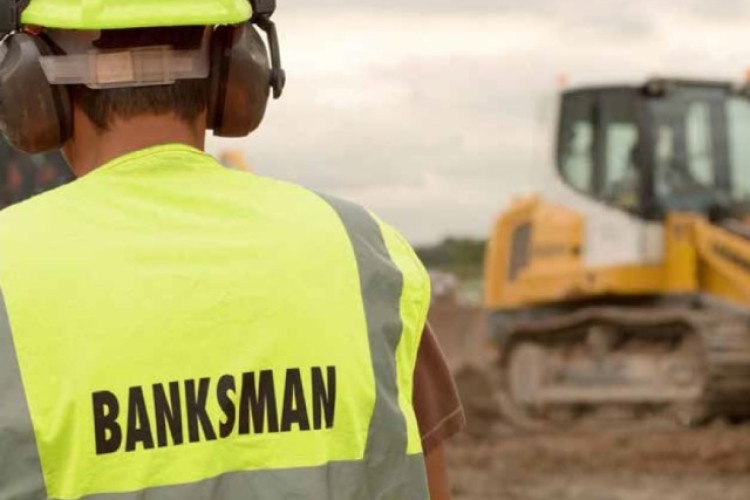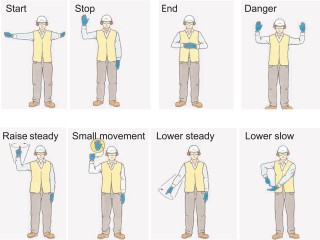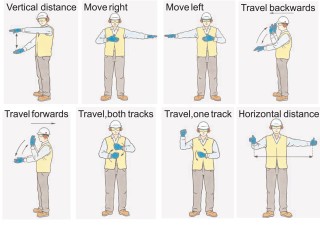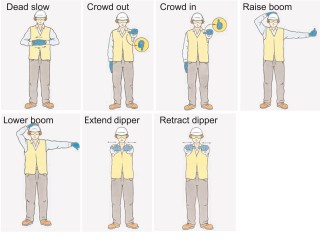The voluntary code of practice seeks to prescribe a set of universally accepted hand signals, specifically designed to train and educate operators and banksmen throughout industry when using excavators as cranes to handle objects.
It includes illustrations of 23 different signals that banksmen are recommended to use, ranging from the simple directions to start and stop operations to more complex travel on one crawler track, crowd in/out dipper and boom section in or down.
Although excavators are designed for digging, not lifting, and general safety advice remains that contractors should only ever select the right machine for the job, OPERC’s initiative is recognition of widespread custom and practice across the construction industry, and the need to make it safer.
The introduction to the document states: “Excavators are also increasingly being used for performing certain lifting operations on site, hereafter referred to as using excavators as cranes. A purpose-designed lifting point fitted to the excavator is used to allow a freely suspended load to be lifted, moved and positioned. Whilst an excavator should not automatically be the first option considered for a lifting operation, its widespread application for smaller, non-precision and repetitive lifting tasks must be recognised and as such the lifting operation must comply with, and undergo, a thorough examination as required by the Lifting Operations and Lifting Equipment Regulations 1998 (LOLER, 1998).”
The document says: “Using excavators as cranes adds a further layer of risks to an operation. Some of these are due to incorporation of the lifting process itself, such as failure of the lifting equipment or unplanned detachment of part or all of the load being lifted. Others arise from the fact that excavators are designed primarily as a digging machine, not lifting, so they move differently and more quickly, particularly when turning and slewing; this increases risks such as instability or contact with objects or persons.

“Effective communication between site personnel is crucial in mitigating many of the risks that lead to these accidents and incidents. When utilising excavators as cranes, the banksman…forms an important symbiotic partnership with the machine’s operator. The banksman is the person who directs the movement of the machine from the points near where a load is attached and detached – particularly when the excavator operator may not have clear visibility. Communication is often achieved using a combination of mobile telecommunications devices, verbal commands and importantly hand signals. However, despite this essential role, there are at present no international standards available that define and prescribe hand signals for banksmen when excavators are used as cranes to handle objects. Furthermore, there is no universal agreement in operator training courses on what signals should be used in the event that an excavator is utilised as a lifting device. Such a notable gap in current practice literature can lead to poor communication and confusion between the operator and banksman, and to unnecessary incidents, accidents or fatalities occurring.”
Got a story? Email news@theconstructionindex.co.uk






